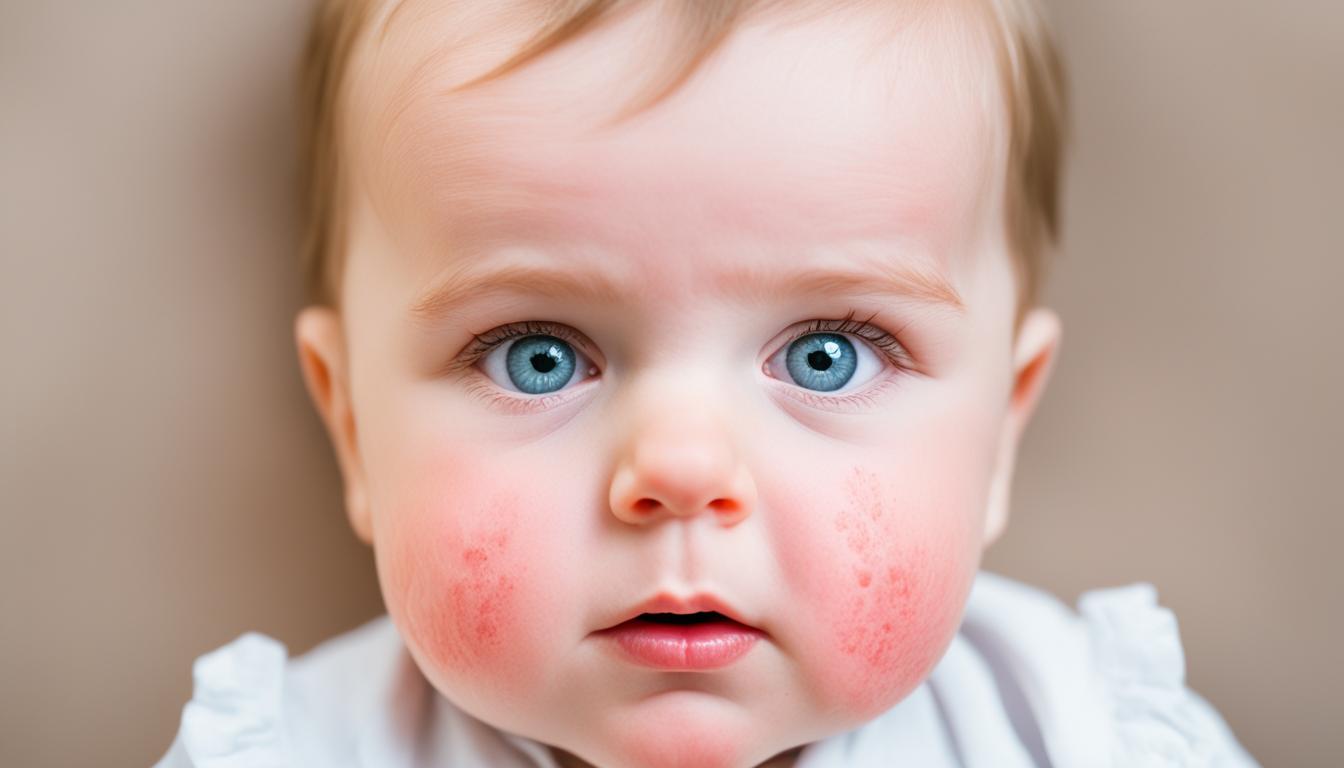Fifth disease, known as erythema infectiosum, is a common childhood illness. It’s caused by the parvovirus B19. This virus leads to a “slapped cheek” rash on the face. This is then followed by a lacy, itchy rash on the body.
Most children with this virus have mild symptoms. The illness usually goes away on its own. But for some with weak immune systems, it could cause problems.
Doctors typically diagnose fifth disease by looking at the rash and joint pain. They might also use lab tests to confirm infection or check if it’s a recent one.
Usually, treating this disease means helping with the symptoms. This involves using drugs to lower fever, relieve itching, and ease joint pain. In serious cases, treatments like immunoglobulin therapy or even stem cell therapy might be needed. Stem cell therapy, for example, can help reduce the virus in the body. It also aids in improving anemia, which is a low count of red blood cells.
Stopping the spread of fifth disease can be done through good hygiene and avoiding shared items. At the moment, there’s no vaccine for this virus that you can buy. But scientists are working to develop one.
Key Takeaways:
- Fifth disease is a common childhood infection caused by the parvovirus B19.
- It is characterized by a “slapped cheek” rash on the face and a lacy, itchy rash on the body.
- In most cases, fifth disease resolves on its own without treatment.
- Individuals with weakened immune systems or certain health conditions may experience complications.
- Diagnosis is based on clinical signs and symptoms, with laboratory testing to confirm and distinguish recent infection.
- Treatment is usually symptomatic, but in severe cases, immunoglobulin therapy or stem cell therapy may be considered.
- Prevention involves practicing good hand hygiene and respiratory precautions.
Clinical Diagnosis of Fifth Disease
Fifth disease usually gets diagnosed by looking at its signs and symptoms. A big sign is the “slapped cheek” rash on the face. This is often followed by a rash that looks lace-like everywhere else. People might also feel joint pain mainly in hands, wrists, knees, and ankles. If someone has been around parvovirus B19 and shows these signs, it’s likely they have fifth disease.
Doctors might also do lab tests to be sure and check if someone is still at risk. While checking for B19 antibodies isn’t common, it can be done in certain cases. This includes testing pregnant women who might have gotten the virus. Doctors can use blood tests or check for the virus’ DNA with a method called PCR. These tests can tell if the infection is recent or not and help with treatment.
Sometimes, people might have the virus but not show any symptoms. Others might have the virus and show signs like high antibodies levels but not recall having rashes or joint pain. So, diagnosis also looks at the whole picture, not just one symptom.
Treatment and Prevention of Fifth Disease
Fifth disease often goes away on its own in healthy people. But, sometimes, treatment is needed, mainly for those with persistent infections or blood issues. Doctors treat the symptoms like fever and joint pain with medicines that reduce inflammation.
Immunoglobulin therapy is best for those with severe cases. It lessens the virus’s impact and helps with anemia. Occasionally, in very bad situations, blood transfusions or stem cell treatments might be needed to help. These can prevent long-term complications.
Preventing fifth disease is key in stopping its spread. Wash your hands well, especially after being near someone who’s coughed or touched their face. Cover your mouth and nose when you sneeze or cough to stop the virus from spreading through the air.
Kids can return to school when the rash shows, as it means they’re less likely to spread the disease. It’s crucial to tell parents and teachers that there’s low risk at this point. We should let them know that it’s okay for these kids to be back in class.
Summary of Treatment and Prevention Strategies:
| Treatment | Prevention |
|---|---|
| Symptomatic treatment with anti-inflammatory drugs | Hand hygiene |
| Immunoglobulin therapy | Respiratory precautions |
| Blood transfusions | – |
| Stem cell therapy | – |
By using these treatments and preventing strategies, we can handle fifth disease well. It’s vital to see a doctor if sick and to stay well informed. Plus, always practice good hygiene to stop the virus from spreading more.
Conclusion
Fifth disease, or erythema infectiosum, is a common childhood illness caused by parvovirus B19. It shows as a rash on the face, like a slapped cheek, and then spreads. While it’s often mild, pregnant women and those with weak immune systems should be careful.
Doctors diagnose fifth disease by looking at the rash and any joint pain. Sometimes, tests may be done to be sure. There’s no cure, but we can manage the symptoms like fever and itchiness. In bad cases, doctors might use special treatments.
Stopping the disease’s spread is about keeping hands clean and covering sneezes. There’s no vaccine yet, but researchers are working on it. Knowing how to spot and treat fifth disease early can make a big difference for those affected.

